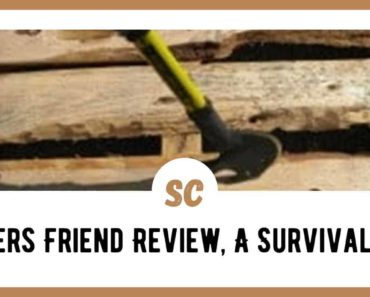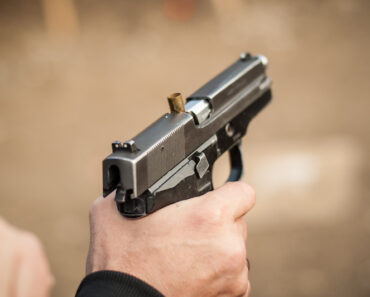Now, more than ever, the world is showing us that our future is hard to predict, with natural disasters occurring all over the globe and the economy slowly declining, reminiscent of 2008.
Recently, I was following the news about the flooding in Brazil, which has been unprecedented in their history. In South Brazil, more than 150,000 people have been left homeless, and many are dead or missing. Entire cities are underwater, and people’s lives have been changed forever.
This is a stark reminder that you can lose your home in a matter of hours and that you should always be prepared to evacuate. Having a bug-out plan and a well-prepared bug-out bag is critical if you live in an area prone to natural disasters. Even if you live in the city or in a zone you consider secure, it’s always smart to make preparations for bugging out.
Why am I keeping a bug out bag and what am I packing
I’ve been a prepper for many years now, and I’ve learned that you won’t truly understand the importance of an item until you need it most. I’ve been in various situations where only with the help of the items in my bag was I able to keep moving forward. I’ve met people who’ve lost everything, and I’ve done a lot of volunteer work helping those displaced by natural disasters.
All the experiences I’ve lived through have taught me that when you’re in unfamiliar terrain, you can only count on your skills and the items you carry to save the day. I’ve been encouraging people to prep for a while now, and I’ve always stressed the importance of having an evacuation plan and a bug-out bag ready at all times.
Over the years, my bug-out bag has gone through multiple changes, and here’s what I’ve learned from adapting and upgrading it:
You need to calculate and test the weight of your bug-out bag. This means that once you’ve added all the items, it’s time to take the bag out for a walk and see how it feels and how easy or difficult it is to carry.
Food and water are bulky items, and beginners often pack more than they need. While I do carry a bottle of water in my bag and a WaterGo bottle (the one with the built-in filter) on me, I advise people to figure out ways to find water and bring tools to purify it. Regarding food, I have four MRE bags and a few protein bars, which are more than enough for me. I do not bring cans, jars, or other bulky items. I have a collapsible pan that I use for boiling water and heating food when needed. That’s pretty much it.
I carry a knife (with a ferro rod built into the sheath) and a multi-tool with an incorporated knife inside the bug-out bag. I also keep a Gerber hatchet and a pocket wire saw in the bag. Additionally, I have a collapsible bucket that I use for carrying water or foraging purposes.
I keep a pair of shoes and two changes of clothes in the bag, along with three pairs of socks (an important item, especially if you like to explore the wilderness). I also keep a lightweight, waterproof, and windproof jacket in the bug-out bag, and a beanie (highly recommended for covering your head when you sleep in cold environments, regardless of how good your sleeping bag is). One extra item I keep in the bag is a belt made of paracord and a net.
I have a first aid kit (which I assembled myself), a roll of duct tape, some zip ties, and a collapsible solar lamp. On me, I have an LED flashlight (similar to the one in my EDC). I also keep cash in the bag and on me.
Attached to the bag, there’s a sleeping bag with an inflatable sleeping pad and a tarp.
Are these items enough for more than 72 hours?
They work for me, but I cannot guess if they will work for you and other readers. It all depends on your skill level and how accustomed you are to traveling through various environments.
For example, I like to forage for food in any environment since I’ve been a forager from a young age. I also observe my surroundings and collect things I believe will be useful later. Another example is harvesting hoof fungus whenever I find it, as I use it for starting fires. If there’s a body of water nearby, instead of using an MRE pouch, I prefer to set a fishing trap using my net.
The point I’m trying to make is that you should use the finite resources in your bug-out bag only when you have no other alternatives. Try to stretch them as much as possible if you haven’t reached your destination after 72 hours.
Why 72 hours is just a number
A while back, it was estimated that it might take up to three days for relief workers to reach an area affected by a major disaster. However, many factors are often overlooked. Ideally, help would arrive within 72 hours or less, but in certain scenarios, this is wishful thinking at best.
I’ve talked about preparedness and having backup plans for a long time. I’ve provided information and support to various organizations and helped people of different nationalities prepare for various scenarios. However, I’ve always been honest with those who requested my help, telling them that prepping is actually the easy part; the true hardship lies in the unknown, or the “randomness factor,” as I like to call it.
The truth is, none of us can predict the future, and we try to prepare as best we can for a variety of situations. However, few people actually spend the time to plan for a backup and a backup for their initial backup. Things can change in an instant—one minute you are in control, and the next you are fighting for your life. You cannot predict and prepare for the unexpected, but you can plan to mitigate the risks and their outcomes.
Here are three scenarios that will help readers understand what I’m talking about, and why they should plan and organize their bug out bags for more than 72 hours.
Scenario 1: You’re evacuating, but the main roads are blocked.
In such a case, you might need to take a long detour, and your supplies may not last. If you know you won’t last too long without a meal or a snack, you will need to pack more food or calm your growling stomach with what you manage to forage. You will also have to ration your supplies until you reach a location that has everything you need. The more you have to travel, the more you need to take care of your body and ensure you get enough proper rest.
Scenario 2: You’ve reached your safe haven, but the place was ransacked, and your resources are gone.
In this case, you will need to stretch your remaining supplies until you can procure more, whether from a local source or by traveling a long distance to a cache or other deposit. Once you figure out what happened, you will need to secure the perimeter to ensure that what you leave behind while on a resupply run won’t disappear again. This means having the tools to secure your supplies. If you need to bury them, you will need a shovel and a container. If you plan to hang the supplies out of reach, you need bags (even heavy-duty garbage bags may work in some cases). For example, I prefer the second option because it’s less work, keeps your supplies out of sight (people rarely look up), and properly camouflaged among the greenery.
Scenario 3: Your partner is injured, and you need to make frequent stops.
Injuries are common during and after a disaster. Many people get hurt in the aftermath due to panic, the rush to accomplish tasks (helping others, getting to safety, exiting dangerous locations, etc.), and plain negligence. During my camping trips, I’ve assisted quite a few hikers who sprained their ankles or broke their feet. The number one cause of these accidents is not looking where you step and being distracted by the surroundings. If you or your partner get injured, you will need to make frequent stops to conserve energy and tend to wounds. This will take a toll on your resources, especially water and medical supplies, if you’re dealing with a serious injury. It goes without saying that improper use of first aid supplies can lead to improvisations, and some folks will make mistakes.
A last word
When planning for bugging out and building your bug-out bag, consider the unexpected factors that can occur in any imaginable scenario. Keep in mind your strengths and how you can make the most of them, but also acknowledge your weaknesses and plan to mitigate failures. There’s no guarantee that you will reach your destination within 72 hours, so you need to ensure you can handle the situation if it takes longer.




























